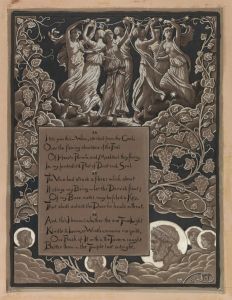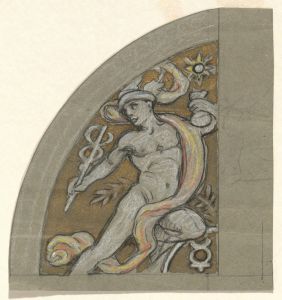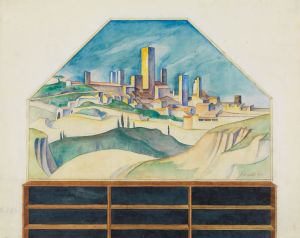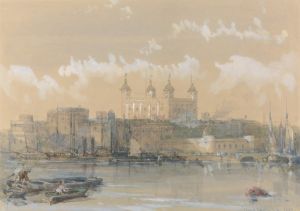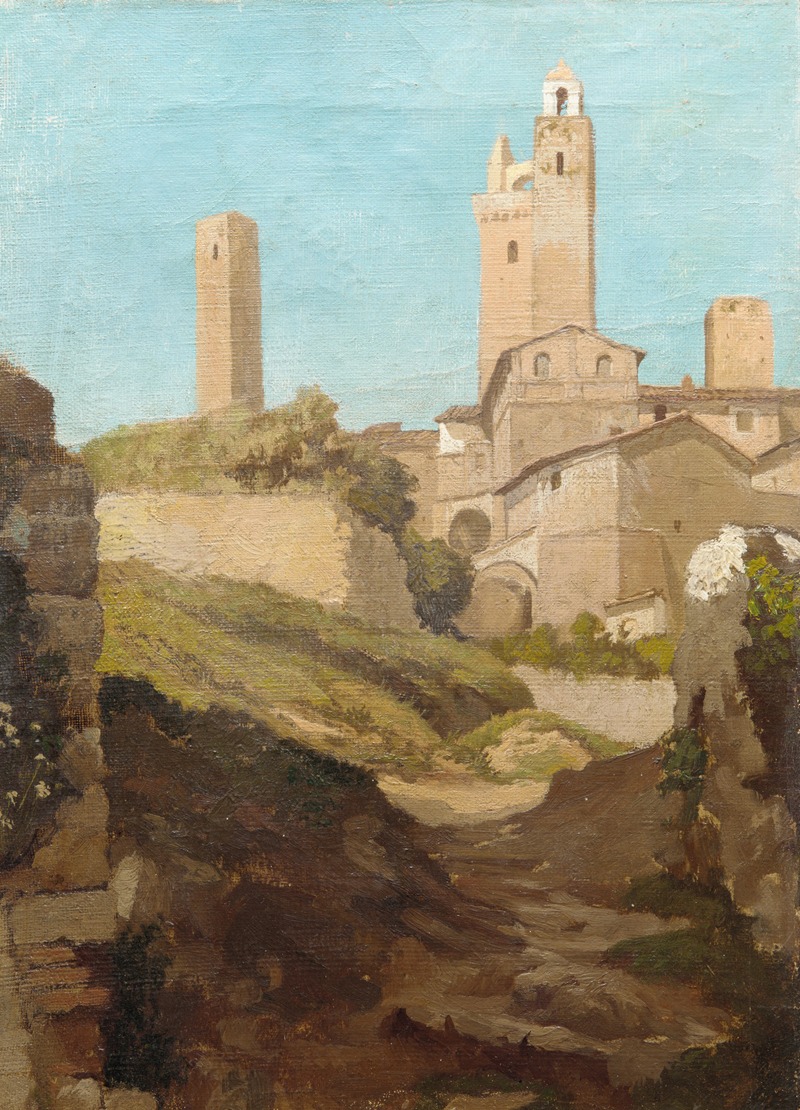
San Gimignano
A hand-painted replica of Elihu Vedder’s masterpiece San Gimignano, meticulously crafted by professional artists to capture the true essence of the original. Each piece is created with museum-quality canvas and rare mineral pigments, carefully painted by experienced artists with delicate brushstrokes and rich, layered colors to perfectly recreate the texture of the original artwork. Unlike machine-printed reproductions, this hand-painted version brings the painting to life, infused with the artist’s emotions and skill in every stroke. Whether for personal collection or home decoration, it instantly elevates the artistic atmosphere of any space.
Elihu Vedder was an American symbolist painter, born in 1836 and known for his visionary and often mystical works. One of his paintings, "San Gimignano," reflects his interest in capturing the essence of places with historical and artistic significance. San Gimignano is a small medieval hill town in Tuscany, Italy, renowned for its well-preserved architecture and stunning towers that date back to the Middle Ages. Vedder's painting of San Gimignano is an artistic interpretation that captures the unique atmosphere and historical depth of the town.
Vedder spent a significant portion of his life in Italy, where he was deeply influenced by the country's rich artistic heritage and picturesque landscapes. This influence is evident in his painting of San Gimignano, where he combines his symbolist style with a realistic portrayal of the town's iconic skyline. The painting likely depicts the town's famous towers, which were originally built by patrician families as symbols of their wealth and power. These towers, along with the town's medieval walls and buildings, create a striking silhouette that has inspired many artists over the centuries.
The painting "San Gimignano" by Elihu Vedder is characterized by its attention to detail and atmospheric quality. Vedder's use of light and shadow enhances the dramatic effect of the town's architecture, while his careful brushwork captures the texture of the stone buildings and the surrounding landscape. The painting reflects Vedder's ability to blend realism with a sense of mystery, a hallmark of his symbolist approach.
Vedder's work often explored themes of time, memory, and the passage of history, and "San Gimignano" can be seen as an exploration of these ideas. The town itself is a testament to the passage of time, with its medieval structures standing as witnesses to centuries of history. Through his painting, Vedder invites viewers to contemplate the enduring nature of such places and the stories they hold.
While specific details about the creation and exhibition history of "San Gimignano" by Elihu Vedder are not widely documented, the painting remains an important part of his oeuvre. It exemplifies his skill in capturing the spirit of a place and his ability to convey deeper symbolic meanings through his art.
Elihu Vedder's contributions to art extend beyond his paintings; he was also a poet and illustrator, known for his illustrations of Edward FitzGerald's translation of "The Rubaiyat of Omar Khayyam." His diverse body of work reflects his broad interests and his commitment to exploring the intersections of art, literature, and philosophy.
In summary, "San Gimignano" by Elihu Vedder is a painting that captures the essence of a historic Italian town through the lens of symbolist art. Vedder's depiction of the town's architecture and landscape reflects his deep appreciation for Italy's cultural heritage and his skill in blending realism with symbolic meaning.











